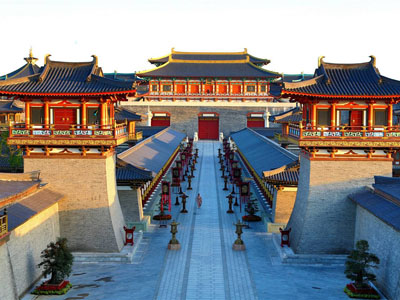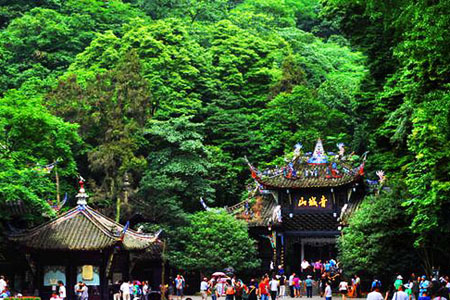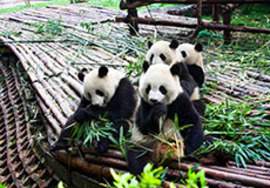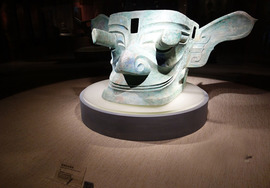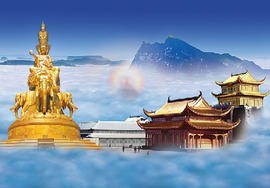Baiyu county is the most important base of Ningma section of Tibetan Lamaism, also called Red Section. A lot of huge monasteries of red Lamaism were built here.
Baiyu Monastery 
Baiyu Monastery, built in 1857, is located in Golog Tibetan Autonomous Prefecture, Qinghai Province, between the north line and the south line of Sichuan-Tibet Highway. It was not until the end of 1970s that the highway was built to Baiyu Temple, 991 kilometers away from Chengdu. It is a large-scale and influential Ningma(宁玛派) monastery in the border area of Qingchuan and Gansu.
Baiyu Temple, gainning its reputation due to its mother temple, is the largest temple in Baiyu, Sichuan Province. The main buildings are seven Buddhist temples, three Buddhist temples, three stupas, eight large-scale prayer rooms and monasteries, with more than a thousand monks. This temple, 30 kilometers to the north, is a famous Nianbao Shenshan Scenic Area(年保神山).
In the lecture hall, there is a set of Tibetan scriptures presented by Tibetans in the United States, which is very exquisite. There are two stupas of eminent monks, which are covered with gold and silver. One of the larger stupas contains a Buddha's tooth, which is extremely precious and regarded as a temple treasure.
There are nearly 10,000 Buddha statues in Baiyu Temple. In 1994, the temple was listed as a state-level cultural relics protection unit. The main Buddhist activities of the temple every year include 45-day "Sitting in the Summer" in July and August. Thousands of monks and religious believers worship the Buddha statue and pay homage to Hada. The scene is very spectacular.
Yaqing Monastery
Yaqing Monastery, located in Changtuo Village, Acha Town, Baiyu County, Ganzi Tibetan Autonomous Prefecture, Sichuan Province, is 120 kilometers away from the county seat. With about 4000 meters above sea level, it belongs to the Ningma Sect of Tibetan Buddhism.
Built in Changtai Prairie, Changqu River passes through the temple, with flat terrain and broad vision. East side of the river is a basin and wetland in Changtai area, which is the Juemu area. West side of the river is a hillside, which is a monk area. The female monks' houses are built along the hillside.
One of the fundamental reasons why Yaqing Temple is different from other places is that there are many female monks. According to incomplete statistics, there are as many as 20,000 or 30,000 women who come here. In Tibetan, they are also called "Juemu". In Tibetan culture, the king's mother and sisters are usually called Juemu(“觉姆”), which also shows that everyone thinks highly of female monks.
In addition, this title is also linked to geographical factors. For example, the main peak of the Himalayas is called "Qomolangma", "Qomolangma" and "Juemu" also have very similar transliteration and in Tibetan.
The devotion to Buddhism has penetrated into their hearts, and the plateau itself is far from the secular, and naturally it will suffer hardships in the process of practice. Therefore, some people say that they are the last people in the world who take their time and are not tempted by anything.
Whenever observing meditation, juemu in Yaqing Temple think about their innermost feelings and realize the true meaning of life. Apart from studying Buddhism, juemu in Yaqing Temple also undertook a lot of basic work inside the temple. To outsiders, these were full of hardships and poverty, but they didn't complain at all. No one thought these were beyond ordinary people's labor.
Juemu( Nun) in Yaqing Templechose to come here and gradually learned to adapt to everything with a smile. In fact, behind all this, the "female view" plays a role in Tibetan culture. As early as 2,500 years ago, the Buddha's idea that “all beings are equal”and “women also become Buddhas”also had a great enlightenment.
In the teachings of Tibetan Buddhism, the equal status and value of women are also clearly affirmed, and it can even be said that in the world of practice, women are also given lofty status. For example, it has been clearly stipulated in the secret precepts: it is the foundation of all vows not to denigrate and disrespect women.
Tibetan Buddhism in Yaqing Temple also reflects the special respect of Tibetan Buddhism for women, and also practices the spirit of Buddhism, which is the embodiment of the continuation of Buddha's thought. After Buddhism was gradually spread, various sects have risen rapidly and developed and passed down to today.
Tibetan Buddhism in Yaqing Monastery has been practicing the Buddhism of "Prajna Buddha Mother" and the idea of equality of all beings, and the status of women has achieved great strides and once became a symbol of wisdom.
Gartok Monastery
The larest also most myesterious red school monastery hiding in the deep mountain.
Chaqing songduo Nature Reserve
Chaqing songduo Nature Reserve is located 40 kilometers southeast of Baiyu County, Sichuan Province. A state-level nature reserve of forest and wildlife types, which mainly protects rare wild animals such as white-lipped deer and golden eagle and their natural ecosystems. The total area is 1436.826 square kilometers. There are many kinds of rare animals living here, which are rare in China and are regarded as a paradise for rare animals.
Chaqing songduo Nature Reserve covers an area of about 550 square kilometers. There are 8 species of national first-class protected animals, 23 species of national second-class protected animals and 4 species of provincial protected animals, mainly protecting wild animals such as white-lipped deer and leopard.
Its natural conditions in Chaqing songduo Nature Reserve are suitable for the survival of eleven kinds of national first-class protected animals, mainly white-lipped deer, which are concentrated in distribution and account for more than two-thirds of the world's stock. Abundant animal species and huge biological gene banks forms a unique natural ecological kingdom.
Chaqing songduo Nature Reserve can not only be used to develop eco-tourism, but also become a multi-functional tourist destination such as eco-sightseeing, scientific research, leisure, exploration, etc., providing tourists with a model of high-level ornamental development and becoming a base for researchers and college students to explore nature and study biodiversity.
Weather Information of Baiyu:
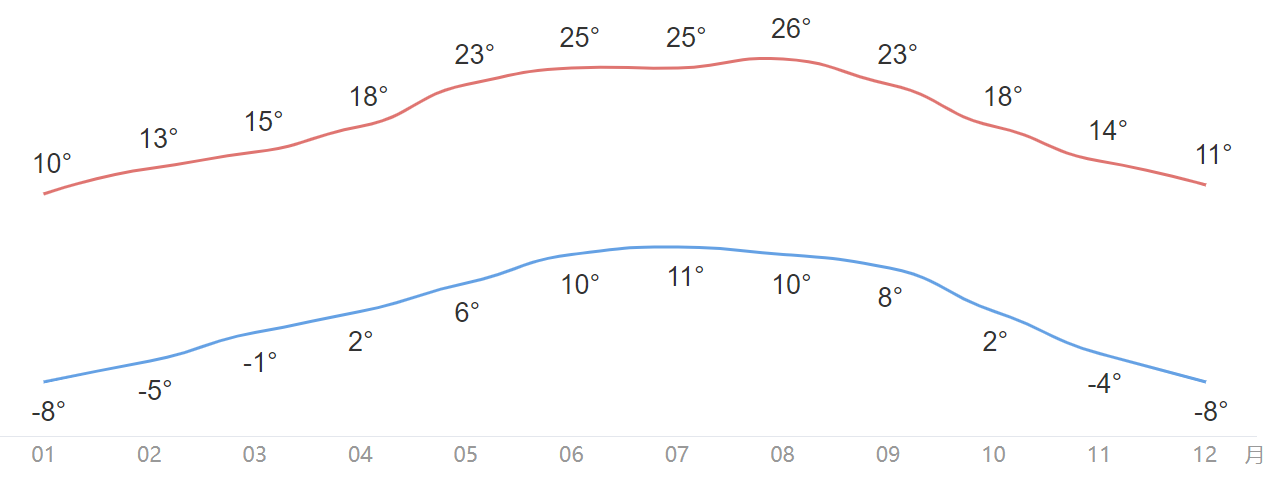
Note: From January to December, red line is the highest Centigrade in average, blue line is the lowest climate in average.
Recommended Baiyu Tour Packages:
1. 10 Days Danba, Dege, Daocheng Yading Tours in East Tibet
2. The Most Beautiful Sichuan Plateau Tours
